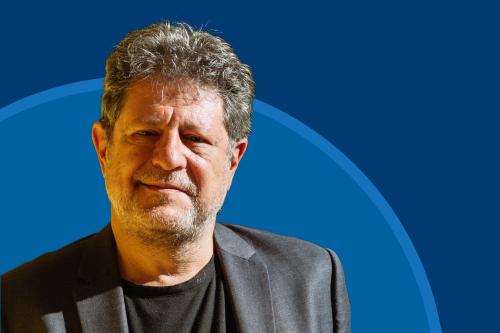The next global development agenda is currently being hotly debated in the halls of the United Nations and in countries around the world. However, it is clear that addressing the issue of equality of opportunity will be central. The UN secretary general’s High-Level panel report calls for the next global development goals to “leave no one behind.” As the world discusses what the agenda will be, it is useful to pause and reflect on what we need to know and consider to effectively implement such a vision. What does it really mean to leave no one behind? What are the implications for ensuring that everyone, no matter how hard it is to reach them, benefits from advances in human development?
In education, it is clear that leaving no one behind means putting a much greater emphasis on scaling up quality education services, especially for the most marginalized communities. We must do a far better job at extending education’s reach to those currently left out, such as girls from the poorest families, children living in fragile states and remote communities and young people living with disabilities. It is a deep injustice that at the current rate of progress, it will be another 100 years until all girls in Sub-Saharan Africa, including those living in the lowest-income households, can be expected to make it through junior secondary school. The wealthiest boys in these countries will get through junior secondary school within 37 years.[1]
But it is not just enrollment and progression through school that we must be concerned with. To really leave no one behind, we must make sure that all children and youth are able to have a quality education that allows them to develop as they can the range of competencies needed for their future lives and livelihoods—competencies such as knowing how to read, analyzing problems, manipulating numbers and working collaboratively with others. In short, we have to make sure that accessing education makes a difference by providing real skills. It is a tragedy that 250 million children are unable to read, write or do basic mathematics; but it is unforgivable that 130 million of these children have already spent four years in school.[2]
To truly scale up quality education—sometimes referred to as an “access plus learning” agenda—we need to invest some time in thinking about how quality education services can reach everyone. The standard recipe used by so many countries is to advance the education Millennium Development Goals by building schools and making attendance free and compulsory. But this strategy will not have good enough results for an ambitious post-2015 agenda. We need to develop new approaches that reach the most marginalized and ensure that young people not only go to school but learn while there.
On February 24, the Center for Universal Education at Brookings (CUE) will host a series of events on new ideas for scaling up and financing quality global education. Many programs in the global education community have been successful in providing quality education to small settings, but can those programs be scaled to reach larger groups, particularly the most marginalized, and deliver the same results? Do they have the financing and delivery systems that are needed? Or the processes to manage staff, training and back-office administration? As we discussed in a volume of case studies, Getting to Scale, the ingredients of many successful small-scale projects—passionate leaders, experienced project managers and implementers, sufficient resources for evaluation and knowledge and time to get things right—do not translate to scale. One must move fast and be prepared to execute a vision that might look mad in a standard business plan.[3] Applying these lessons to the education sector will be crucial for making sure we leave no one behind. CUE is embarking on a new project to do just this. Millions Learning is an effort to better understand where and how progress has been made to scale up education services. We will work with a range of partners to identify and learn from cities, states and countries that improved learning outcomes at scale.
One crucial criterion for scaling is the resources available for the endeavor. Unfortunately, financing to global education continues to suffer. In 2011, aid to basic education fell for the first time since 2002. There was a six percent drop from $6.2 billion in 2010 to $5.8 billion.[4] Additionally, the six percent drop in aid to basic education from 2010 to 2011 is double the drop in total aid levels during the same period.[5] Financing to education from the private sector is dramatically lower than other sectors, with global health efforts receiving 16 times more corporate giving than global education.[6]
Mobilizing sufficient financing and ensuring it is used well for a post-2015 “access plus learning” agenda that leaves no one behind must be a top priority for the global education community. But we must have these discussions in a way that brings into conversation the different sources of financing and assesses how they work together. Currently, distinct constituencies exist that explore domestic financing formulas, official development assistance (ODA) and innovative financing, to name a few, but these issues mostly remain in separate debates. Discussions of how to use resources most effectively are also frequently split off from debates about mobilizing those resources, though clearly both are essential to achieving our goals. On Monday, February 24, we will explore how different countries have addressed these issues, from Kenya to Bangladesh to Australia to Poland, in the hopes of advancing the conversation on financing a global education agenda that truly leaves no one behind.
[2] UNESCO, Education for All Global Monitoring Report: Teaching and Learning—Achieving quality for all (Paris: UNESCO, 2013-4).
[3] Quote from Michael Joseph, CEO, Safaricom, on lessons from M-PESA’s scaling up, in Getting to Scale, op. cit.
[5] Rose, Pauline, Liesbet Steer, Katie Smith, Asma Zubairi, “Financing for Global Education: Opportunities for Global Engagement,” Brookings Institution and Global Monitoring Report, September 2013. 5.
[6] Global Partnership for Education and Plan International, “Mobilizing Investment for Equitable Education,” April 2013.
The Brookings Institution is committed to quality, independence, and impact.
We are supported by a diverse array of funders. In line with our values and policies, each Brookings publication represents the sole views of its author(s).



Commentary
Leaving No One Behind: Can We Scale up Quality Education in a Post-2015 World?
February 19, 2014